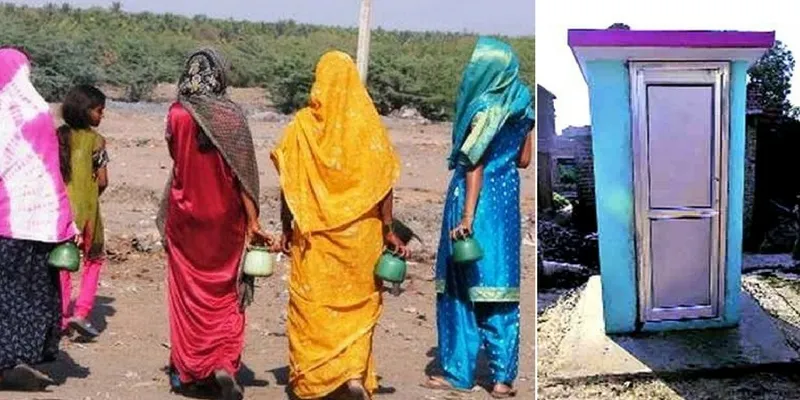Priced at less than govt’s grant of Rs 12k, Chennai students build toilet that doubles up as bathroom
In an attempt at helping the country achieve its goal of becoming open defecation free, two engineering students from Chennai have built a bathroom-cum-toilet that costs less than government’s grant of 12,000 for each toilet. S Jerome Samuel and I Balasubramanian, structural engineering students from Anna University, are the brains behind this project.
For the structure, which is about 6ft x 3ft, they have used concrete panels as walls and coloured metal sheet for the roof. The duo has used reinforced concrete rings — normally used for wells — for the septic tank. In an interview with The Hindu, they said,
“You can complete the construction of this low-cost bathroom-cum-toilet within five hours if you have already dug the pit for laying the foundation and it will be ready for use after 12 hours, the minimum setting time for cement laid around the closet.”

They plan on asking the suppliers to provide holes in the concrete panels to fit the pipeline without damaging the structure. People who were using the prototype have vouched for its stability and are happy with the design.
As promising as their initiative is, it is high time we realised that all our sanitation-related problems will not be addressed just by building toilets. For instance, Delhi, which has the highest number of sewage plants in India (34), hasn't been able to treat its sewage properly.
With only 30 percent of sewage generated by Indian cities treated and more than 30 percent of municipal sewage plants not functional, it is time we asked the question — what happens to the waste after it is flushed out of our sight?
One of the major hurdles with treating sewage is the high operational and maintenance cost. As a result, domestic sewage is one of the biggest polluters of our water resources, according to DailyO. The problem, as explained by independent journalist and researcher Sopan Joshi, is that,
"According to an estimate, 80 percent of the cost to treat wastewater is spent on laying network lines, water pumps, payment for electricity to run these pumps, and other maintenance. It is also expected that the electricity and skilled manpower are already available, which is usually not the case in our cities."
Do you have an interesting story to share? Please write to us at [email protected]. To stay updated with more positive news, please connect with us on Facebook and Twitter.







